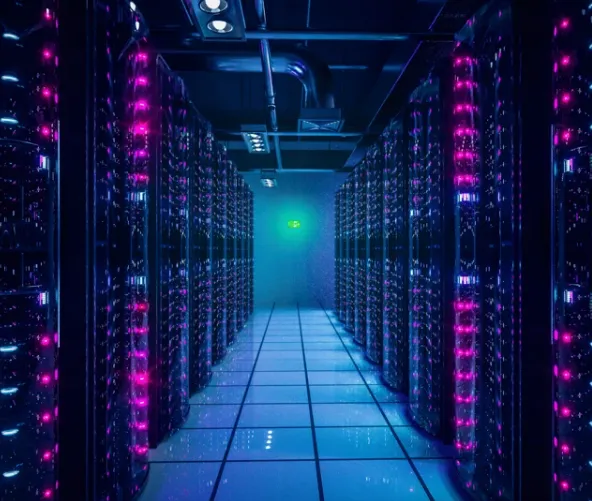Data centres play a crucial role in supporting the rapid advancements of artificial intelligence (AI), but their environmental impact is becoming harder to overlook. As demand for data storage grows alongside AI developments, the industry faces increasing pressure to meet sustainability goals while balancing rising operational costs. BS Teh, Chief Commercial Officer at Seagate Technology, explores the strategies data centres can adopt to manage energy consumption, extend hardware lifecycles, and incorporate AI to help reduce carbon emissions.
The Growing Energy Demands of Data Centres
Data centres are the backbone of AI-driven industries. With the exponential growth of AI, these facilities are now tasked with managing enormous volumes of data. Research shows that by 2030, energy consumption in data centres could triple, largely driven by AI-related data generation and the need for increased storage capacity. However, expanding infrastructure to accommodate these demands requires significant investments in materials, upgrades to cooling systems, and extending the lifespan of storage equipment—each of which presents both financial and environmental challenges.
While energy consumption in data centres is rising, AI’s energy use extends beyond just storage. Computing, networking, and data processing are the areas consuming the most power. Data centres, even though they don’t directly produce AI hardware like processors, must consider the entire supply chain when aiming to reduce their carbon footprint.
Despite these hurdles, there is a strong commitment to sustainability within the data centre industry. A Seagate survey found that nearly 94.5% of companies are actively working on lowering the carbon footprint of their storage operations. However, the major barrier to implementing sustainability solutions—like energy-efficient equipment, advanced cooling systems, or renewable energy sources—is a lack of physical space, with 45.5% of respondents citing this as their primary challenge. This leaves data centres in a dilemma: either expand into new, costly spaces or find innovative ways to optimize existing infrastructure.
Short-Term Solutions for Immediate Gains
To make tangible progress on sustainability, data centres need to focus on both short-term and long-term strategies that are both cost-effective and reduce carbon emissions. Improving energy efficiency is not only crucial for cutting carbon output but also for lowering operational costs over time.
In the short run, regular assessments of equipment life cycles can uncover opportunities to extend the use of existing components. Extending the life of equipment not only helps reduce the demand for raw materials but also cuts down on e-waste, making it a long-term cost-saving measure. Data centres can also invest in advanced cooling technologies, such as liquid or immersion cooling, and upgrade HVAC systems to more efficiently dissipate heat, which in turn lowers energy consumption and emissions.
Another immediate solution is to integrate renewable energy sources. By shifting reliance away from fossil fuels, data centres can decrease carbon emissions without significantly raising operational costs. These steps are not just environmentally beneficial but will also reduce energy expenditures in the long run.
Long-Term Strategy: Leveraging AI for Sustainability
While short-term improvements are necessary, a shift in mindset is essential for achieving long-term sustainability goals. Data centres need to consider sustainability as a key driver of competitive advantage, viewing green infrastructure investments as long-term strategies rather than short-term expenses.
Interestingly, 55.5% of Seagate survey respondents believe that AI itself can help optimise data storage operations and contribute to sustainability. AI-driven solutions can be used to monitor energy consumption, optimize cooling, and even predict when components need maintenance, allowing for more efficient use of resources and a reduction in overall carbon output.
As AI continues to reshape the data centre landscape, it can also serve as a tool to address the very challenges it creates. By adopting innovative technologies today while planning for future efficiency improvements, data centres can strike a balance between meeting the growing energy demands of AI and adhering to ambitious sustainability goals.
Conclusion: The Path to Sustainable Data Centres
The data centre industry faces a complex balancing act between rising costs and climate commitments. To meet these challenges, businesses must adopt both immediate and long-term strategies. Short-term solutions, like investing in energy-efficient technologies and renewable energy sources, can provide quick wins while reducing carbon footprints. However, the key to long-term sustainability lies in changing organizational mindsets and leveraging AI for operational efficiency.
By embracing both innovation and strategic planning, data centres can align their operations with sustainability goals, reducing costs, and ensuring a greener future for AI-driven industries.







